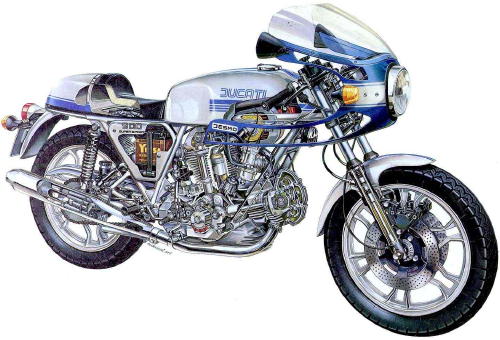Diecast Motorcycles
Diecast Motorcycles
With their sleek design and throaty call to glory, motorcycles have personified the rebellious nature of many a rider since their inception in the nineteenth century. Whether they be off-road dirt bikes or MotoGP racers, side car based transports or weapons of war, the motorcycle has become a powerful statement for many an aficionado looking to express their bravado. It therefore comes as no surprise that several high profile modelmakers have chosen to replicate these exquisite cycles in all their diecast beauty, demonstrating once again that form follows function, or perhaps in the case of the motorcycle, the other way around.
The Motorcycle: A Brief History
The inspiration for the earliest dirt bike, and arguably the first motorcycle, was designed and built by the German inventors Gottlieb Daimler and Wilhelm Maybach in Cannstatt (since 1905 a city district of Stuttgart) in 1885. The first petroleum-powered vehicle, it was essentially a motorized bicycle, although the inventors called their invention the Reitwagen ("riding car"). They had not set out to create a vehicle form but to build a simple carriage for the engine, which was the focus of their endeavors.
However, if one counts two wheels with steam propulsion as being a motorcycle, then the first one may have been American. One such machine was demonstrated at fairs and circuses in the eastern US in 1867, built by Sylvester Howard Roper of Roxbury, Massachusetts. There is an existing example of a Roper machine dated 1869. It's powered by a charcoal-fired two-cylinder engine, whose connecting rods directly drive a crank on the rear wheel. This machine predates the invention of the safety bicycle by many years, so its chassis is also based on the "bone-crusher" bike. In 1868, the Frenchman Louis-Guillaume Perreaux patented a similar steam-powered motorcycle, probably invented independent of Roper.
In 1894, the Hildebrand & Wolfmuller became the first motorcycle that was available for purchase. In the early period of motorcycle history there were many manufacturers as producers of bicycles adapted their designs for the new internal combustion engine. As the engines became more powerful and designs outgrew the bicycle origins, the number of motorcycle producers lessened.
Until the First World War, the largest motorcycle manufacturer was Indian. After that, this honour went to Harley-Davidson, until 1928 when DKW took over as the largest manufacturer. After the Second World War, in 1951 the BSA Group became the largest producer of motorcycles in the world. The German NSU was the largest manufacturer from 1955 until the 1970s when Honda became the largest manufacturer, a title it retains to this day. British manufacturers (Triumph, BSA, Norton) held a dominant position in some markets until the rise of the Japanese manufacturers (led by Honda) in the late 1960s and early 1970s) which were able to produce designs more quickly, more cheaply, and of better quality. Today the Japanese manufacturers, Honda, Kawasaki, Suzuki, and Yamaha dominate the motorcycle industry, although Harley-Davidson still maintains a high degree of popularity in America.
Recent years have also seen a resurgence in the popularity of many other brands including BMW, Triumph and Ducati, and the emergence of Victory as a second successful mass-builder of big-twin American cruisers.(courtesy: Wikipedia)
|







